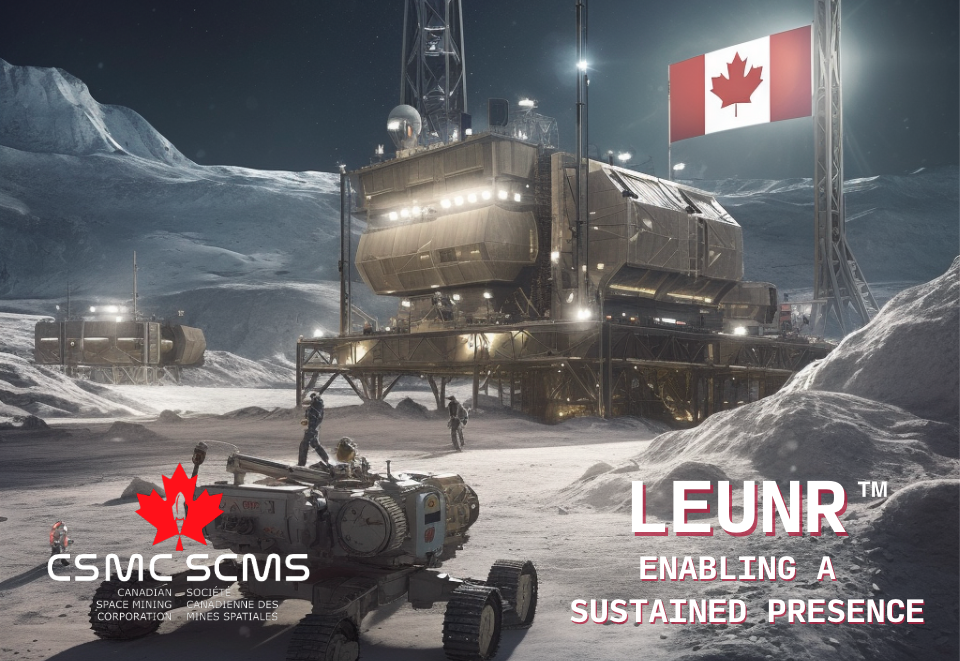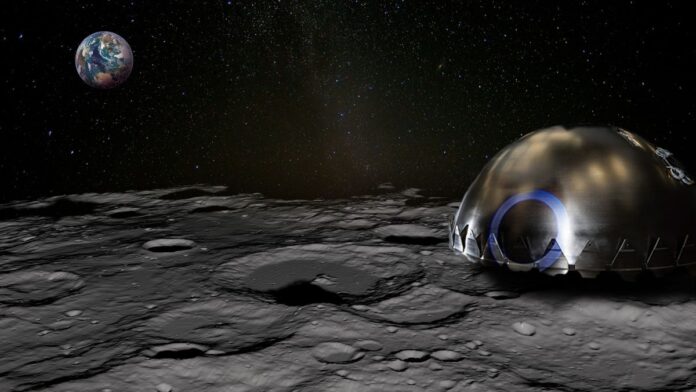Our small steps back to the moon today could build a rich new industry.
There’s lots of buzz about mining the moon. Satellites have spotted water at the lunar south pole. There could also be minerals lying underneath. Moreover, NASA is leading an international Artemis Accords plan to send excursion missions to the surface in the next decade, both crewed and robotic.
Already planning is in store for the next wave of missions in the 2030s or so: Those that attempt to use the resources on site to build permanent settlements. Just-retired NASA astronaut Drew Feustel is part of one of those companies.
Now working for the Canadian Space Mining Corp. (CSMC) as its executive vice-president of strategy, Feustel sees a bushel of government contracts as fueling future growth. The company now has about a dozen people, more than double their numbers from five years ago.
Related: Space mining startups see a rich future on asteroids and the moon
The NASA-led plan to bring humans to the moon (using hardware like the Orion spacecraft conceived as long as two decades ago) created a gold rush of opportunities for smaller companies. Following the success of the uncrewed round-the-moon Artemis 1 mission in 2022 that tested Orion in lunar orbit, the agency aims to land several human and robotic missions on the moon very soon.
NASA’s Commercial Lunar Payload Services (CLPS) program may put a commercial payload on the moon’s surface as soon as this year; Canada has its own version known as the Lunar Exploration Accelerator Program (LEAP). Meanwhile, Canada and NASA together are working on the Artemis 2 mission that will send four humans around the moon no sooner than November 2024. Landings of people may follow starting with Artemis 3 in 2025 or 2026, if the spacesuits and landers are ready.
Related: Artemis 2 astronaut Jeremy Hansen says a Canadian will walk on the moon one day
Feustel’s perspective not only includes being in space, but also lived experience with mining and dual nationalities. He’s an American-Canadian citizen whose milestone astronaut moments include repairing the Hubble Space Telescope and commanding the International Space Station. Just retired from NASA on July 31 after 23 years, Feustel spent 226 days in space over three missions. His decades of space work have taught Feustel, he said, to be pragmatic as long-term space goals with government are subject to budgets.
But Feustel does feel some optimism: “This is the first time in my life … where we have ever seen this much investment and momentum focused on human space exploration. Not just in our human space exploration, but space exploration in general,” he said.
“That’s intriguing to me. It’s encouraging to me. But in the end, we are still really following on the coattails of what the U.S. government and NASA is doing to enable this. That said, because of the momentum and the amount of investment that private industry are making and other sovereign nations are making in this — at this stage of the game — I think there’s great promise for us.”
Related: Moon mining gains momentum as private companies plan for a lunar economy
Feustel first considered joining CSMC in April after meeting with senior management at the Colorado Space Symposium, which is a major industry event held every year. The company’s approach to “societal needs,” as Feustel termed it, matched well with the astronaut’s own background: Prior to joining NASA, he earned a doctorate in geophysical sciences. Feustel worked in underground mines and undertook seismic programs in land and marine environments.
Feustel informally divides his new company’s work into near-term, medium-term and long-term approaches. The actual moon mining is very much a years-to-decades plan, he emphasized, but CMSC has revenue-bearing projects that will support the larger mining goal in the meantime.
CSMC, for example, received funding from the Canadian Space Agency (CSA) in June to build a “connected care medical module” that could one day deliver telehealth on the moon. The early-stage prototypes that CSMC and other CSA-funded companies are building, however, could be used in remote environments on Earth and support Indigenous communities in Canada as well. The prototype from CSMC is ready now and the company is moving forward with deployment soon, Feustel said.

Also in the works is a transportable nuclear fission reactor known as Project Leunr, funded by CSA for $1 million CAD ($743,000 USD). The company will use this funding to build on decades of research in micro reactors, which use relatively low power but have a high “technology readiness level” for fast adaptation for space needs.
“Power is something that will be needed on the lunar surface, and there’s a couple of ways to get it,” Feustel explained. “One is solar power, and the other is nuclear. Nuclear is probably the best answer, but with that comes some risks. These particular reactors — this design and this technology — provides a low-mass, low-risk source of energy supply. But with enough (nuclear) modules, you can generate more power.”
The near-term use of this technology again would be to deploy them in northern Indigenous communities in Canada, which often rely on highly polluting diesel power and petroleum products to generate energy. “We can help solve that problem by deploying these small reactors,” Feustel said.
Yet another recent CSA contract for $248,000 CAD ($185,000 USD) is helping CMSC evaluate prospecting in lunar orbit using “novel geophysical techniques” by satellite to study resources below the surface.
More information will be forthcoming on those techniques as the project matures, Feustel said, but in essence they will be able to generate sensitive signals to potentially map sections of Earth’s underground to unprecedented degree.
“We believe it can be used to create clear subsurface exploration definitions out of the Earth, or whatever planetary body you’re looking at. So there’s a potential here — we believe — for mineral exploration. Not only on Earth, but also in planetary bodies.”
Feustel noted there are other companies out there interested in space mining, and he sees CSMC’s role as continuing to develop strong niches and to work with others on Earth or on the moon when opportunities arise. Mining on the moon, he said, could provide alternative pathways for sourcing rare Earth elements, and CSMC will stay flexible as the market evolves.
“I don’t know what the future holds,” Feustel added, “but I know what our intent is. The intent is to grow the company and be a major player, and be representative for Canada in developing the technology.”

